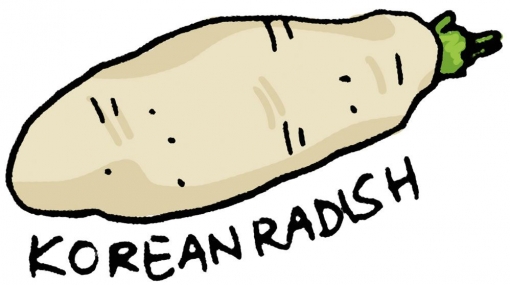Kimchi Chic
In a small village tucked between the Hudson and East rivers, kimchi fever has hit like never before. Eric Ripert of Le Bernardin serves oysters topped with a kimchi jelly (he was tutored in kimchi by his line cooks). Hooni Kim of Danji boasts that his 68-year-old mother-in-law makes all the kimchi for his restaurant, where small plates can cost up to $18 each. Kimchi has become so popular that local kimchi company Mama O’s is petitioning Mayor Michael Bloomberg to declare a citywide Kimchi Day. And in 2006, Wall Street firm Bear Stearns sold the first “kimchi bond,” a financial instrument for South Korean investors — bought and sold in dollars, not cabbages.
City of Lost Angels
In 2008, Roy Choi launched the Kogi BBQ food truck in a parking lot in Los Angeles. He calls the cuisine, including the famed Kogi tacos, “second-generation Angeleno culture,” the product of the best type of fusion: Mexican Americans and Korean Americans living side by side and being inspired by each other’s food traditions.
Hippie Kimchi
I bet you didn’t know that kimchi could be made with caraway seeds, thyme and dandelion greens. Neither did your Korean grandmother, so don’t let her find out about Santa Cruz, CA-based Rejuvenative Foods’ Kim-Chi, which also offers a salt-free version.
In the Shadow of Chunky Monkey
Sunja Hayden moved to Vermont in 1973 and promptly set up shop making and selling her five-star kimchi. Five years later, Ben and Jerry scooped their first ice cream cone nearby in Burlington. That’s right, kimchi came before Cherry Garcia and Chunky Monkey! Vermont may seem like a bizarre place to start selling kimchi (Hayden couldn’t even buy fresh garlic in Vermont in the early 1970s), but it proved to be fortuitous: Vermont is a health-food lover’s paradise. Her first customers were local health food co-ops and college cafes, and now, Sunja’s Oriental Foods has national distribution through Whole Foods. Can a kimchi ice cream be far behind?
Kimchi Pilgrims
Albuquerque, NM, is more than sand art and green chilies. It’s a kimchi hot spot too: The Korean American Association of New Mexico is on a mission to spread the good news about fermented vegetables. They organized Albuquerque’s first-ever kimchi festival in September 2009, timed to coincide with the Korean fall harvest festival. “It’s our version of Thanksgiving,” said organizer Yongshin Kim, whose group plans to expand the festival every year.
Wild and Free in Tennessee
This is the home of Sandor Ellix Katz, a self-described “fermentation fetishist” and inventor of fruit kimchi, among other recipes. Katz, who credits kimchi and other fermented foods with healing his body of AIDS, left New York City over 20 years ago to live with friends and neighbors in rural Tennessee at Short Mountain Sanctuary, where decisions are made by consensus and two “faerie gatherings” are held each year. His books Wild Fermentation and The Revolution Will Not Be Microwaved have attracted legions of new kimchi lovers.
Chief Seattle's Choice
The wacky 206ers of Marination, a Seattle restaurant and taco truck, have dreamed up something befitting kimchi’s multicultural heritage: a kimchi quesadilla with kalua pork. It’s the product of the area’s storied mix of asian american cultures and the owners themselves: Korean-hawaiian-Balkan-Japanese-Chinese-filipino-other.
The Kimchi Mafia of Tucson
The ladies of Tucson Korean Catholic Church Community in Tucson, AZ, may look sweet, but their kimchi packs a punch and their fundraising muscle is unparalleled. With the goal of raising enough money for a permanent church facility, they make over 350 pounds of napa cabbage and horseradish kimchi each month to sell to parishioners and friends. When they can’t get Korean peppers, they use Mexican chilies, which create a slightly darker-colored kimchi and are historically appropriate: The first red peppers for kimchi came from South America.









Comments